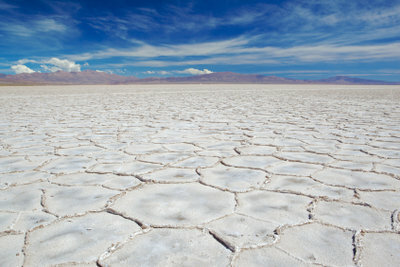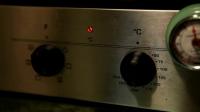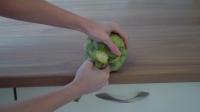What is sodium
The chemical element "sodium" not only has its permanent place in school lessons, but is also present in numerous compounds in everyday life. A brief overview.

Sodium is a chemical element
- Sodium is a very soft metal that is easy to cut. However, only freshly cut pieces have the silver sheen that is characteristic of metals. The element quickly turns gray in air (oxide layer).
- Sodium has to be stored in petroleum, the glass bottles with sodium chunks floating in this liquid are probably familiar to everyone from their school days.
- Sodium has in Periodic table of the elements the atomic number 11, so its atomic nucleus contains 11 protons, the electron shell contains 11 electrons.
- Sodium is in the 1st Group, that is, the element belongs to the alkali metals (as well as potassium and cesium, for example).
- It is characteristic of alkali metals that they are very reactive with only one outer electron.
- Sodium reacts very violently with water (humidity!); Even the smallest bits of sodium on water are an interesting and popular demonstration at school. This produces sodium hydroxide (NaOH) and hydrogen (H).
- Because of its high reactivity, sodium (like all elements of the alkali group) occurs naturally only in chemical compounds, but not as a pure substance. The chemical representation can be achieved, for example, by electrolysis.
Salts in chemistry - simply explained
Salts in chemistry are special compounds that are also used every day ...
You should know about these important sodium compounds
- The best known is undoubtedly sodium chloride (NaCl), known in everyday life as table salt. According to the octet rule, a sodium atom connects with its only outer electron with a chlorine atom, which has seven outer electrons.
- If sodium hydroxide (NaOH) is dissolved in water, the well-known sodium hydroxide solution is formed. When neutralized with hydrochloric acid (HCl), the salt NaCl and water are formed.
- Sodium carbonate (Na2CO3), better known as soda. This compound occurs naturally in salt lakes (e.g. B. in East Africa) and is used in the manufacture of glass, soap and detergents.
- And sodium hydrogen carbonate (NaHCO3) is part of a well-known leavening agent, baking powder. When heated, carbon dioxide (CO2), which throws up the dough.
How helpful do you find this article?



